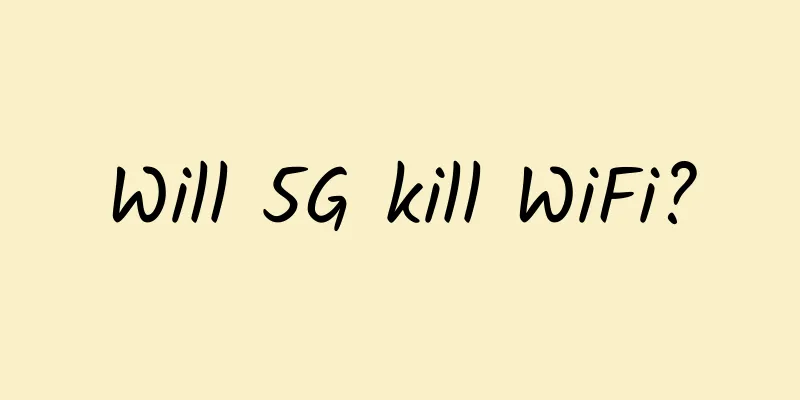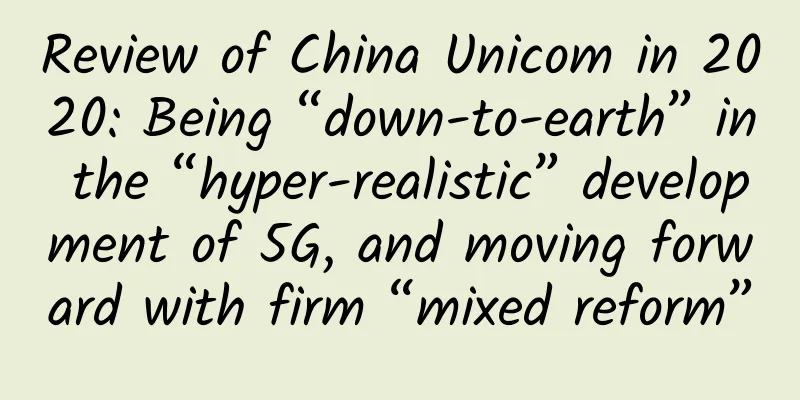Will 5G kill WiFi?

|
As 5G is about to be commercialized, more and more topics are being discussed about 5G. Huawei has been the center of attention in this 5G show. This is definitely a good thing, after all, domestic products have become famous in the world. This is a sign, just like every developed country has several iconic international companies. This is also a sign that China is beginning to go global, although 5G itself does not come with this function, or if you are too radical, 5G may not necessarily be successful.
1. Characteristics of 5G in terms of user experience A technological advancement may have many details and be very complex, but from the user's perspective, it may only reflect one or two or three points. First of all, it has a large bandwidth. Usually we say that 4G has a bandwidth of 100M, of course this is a theoretical value, and in reality it is definitely much less. 5G theoretically has a bandwidth of 10G, and if we only experience 10% of it in practice, it is quite impressive. We also remind you that this speed refers to the downlink speed, and the uplink speed is usually much lower. Moreover, the speed that users can experience is only partially related to the 5G channel. No matter how large the opening is, if the network path is narrow or crowded, or the bandwidth of the other party's server has not been upgraded, I am afraid that the speed upgrade we can experience is very limited. The second is low latency. All communications have latency. For example, 4G latency is generally around 100 milliseconds, while 5G requires latency at the millisecond level. This is to accommodate applications such as Internet of Vehicles and autonomous driving. In addition, 5G not only defines high-speed transmission, but also defines low-speed and low-power consumption. The more famous one is NB-IoT, which has a speed of only more than 100K, in order to adapt to the application scenarios of IoT terminals. Therefore, the ideal of 5G is to unify the world with the Internet of Everything. Of course, this is just an ideal. There are also some technical features, but they can also be felt more intuitively, or there are more topics, so I will list them briefly. For example, in order to adapt to different scenarios and different bandwidths, 5G carrier frequencies are also very rich. The high-speed part is defined in the millimeter wave band of 24GHz and above, while NB is defined in the band below 1GHz. Here we often hear about spectrum planning, wireless management committees, etc., which are to regulate this aspect. After all, there are only so many frequency bands, such as from 433MHz to 100GHz, which is a very scarce natural resource. For example, antenna matrix. Multiple antennas are used to increase capacity and coverage. Of course, the antenna matrix is usually on the base station side, and the terminal part is usually a single antenna. The rest is the technical level, including waveform, modulation method, coding, slicing, etc. These are purely physical, so we will not mention them. If you want to know some terms, let's talk about them separately, including MIMO/OFDM/V2X/QoS, etc. Second, the characteristics of 5G in terms of form We mentioned earlier that the high-speed characteristics of 5G require the use of high carrier frequencies, that is, millimeter waves, which by definition use bands above 24 GHz. What are the characteristics of this band? It has strong attenuation. Long waves have strong diffraction function. In the past, the radio stations used long waves during the war. The distance between major war zones and Yan'an was very long. But millimeter waves are not good. They have short distances, poor wall penetration ability, and even poor air transmission ability. What should we do? In the past, base stations were so-called macro base stations, where one base station covered a large area. Now this is no longer possible, and we need micro base stations, where each base station covers a small area. The question is how to deploy base stations? Where to deploy them? How dense should they be deployed in different scenarios? To what extent can ordinary people's mobile phones reach these base stations in their daily lives? How much will it cost? Should this money be recovered from consumers? There is another question. Do we really have to use 5G? Forget 8K, or any HDTV, to be honest, 4G is enough. Can we use 8K on our phones? Of course, we used text messages when we had 2G, sent color pictures with 3G, and watched videos at will with 4G. Perhaps technology can drive applications, and this trend should be no problem. However, in the short term, the most suitable application scenarios have not appeared. You can say that there is still strong demand in crowded places like airports, stadiums, shopping malls, etc. But it is not widespread, at least not as well advertised. On this point, Master Ren is still very objective. He said that the real 5G application scenarios have not yet appeared.
3. Will 5G kill WiFi? In this way, the current application of 5G is a little awkward. In order to solve people's application problems, 5G envisions a scenario: that is, installing micro base stations indoors in residents. The advantage is that everyone can use 5G. But there are also many problems. Let's talk about the technology first. 5G's ability to penetrate walls is weak, so where is the best place to use it in the home? Even the 2.4G or 5G frequency bands of WiFi are not so friendly, let alone the 24GHz 5G millimeter wave? You said that you can use the low-frequency band, but the speed may not be as good as you think. Compared with WiFi, it has no advantage. In addition, WiFi is an IEEE protocol, and it is not on the same track as 3GPP for cellular communications. WiFi is based on the Internet, and can directly access the Internet; while 5G and other technologies are telecommunications products, and need to be connected through the telecommunications network. From this point of view, it is a waste of social resources. Secondly, from the cost point of view, WiFi is free, and the existing 802.11ac basically meets the needs of applications such as 8K HD, so it seems unnecessary to replace it. In addition, WiFi is a relatively private thing, a local area network that requires authentication to access. 5G is a public network, and if you want to enter the home, there is still some additional work to be done in this regard. Having said that, if in densely populated public areas, 5G may really be able to replace WiFi.
4. Not a conclusion Human relationships are as thin as paper, and the world is like a new chess game. People will naturally vote with their feet based on cost and convenience. Everything is in progress. There is no end game, only the middle game. Ups and downs are often a normal state. |
<<: Five Breakthrough Practices for Future 5G Capabilities
>>: Site24x7 enters China's cloud monitoring market and opens Shanghai data center
Recommend
Ruijie attends the Smart Airport Construction and Development Summit! Giving airports smart wings
From April 17 to 19, the 4th "National Civil...
If we can't be fashionable, we should be stable. Which of the big guys in the technology circle looks most like an old cadre?
The bigwigs in the tech industry all have their o...
20,000 words of detailed explanation! 32 classic questions about Netty!
Introduction Hello everyone, I am Tianluo. When w...
iWebFusion: $115/month - Dual E5-2680v2, 192G memory, 1TB SSD hard drive, 20TB monthly traffic, 5 data centers including Los Angeles
iWebFusion (formerly iWFHosting) is a long-establ...
Powered by EMUI 9.1, Huawei Enjoy 10S brings users a brand new smart experience
In the era of information explosion, consumers ar...
Why does the TCP protocol have a sticky packet problem?
The TCP/IP protocol suite establishes a conceptua...
Former NASA chief joins satellite internet company Viasat
According to foreign media, former NASA administr...
Gigsgigscloud's new Singapore cloud starts from $9.8/month, 1G memory, 10G SSD, 500GB/1Gbps monthly traffic
Gigsgigscloud has launched a new Singapore cloud ...
Wind River Launches New VxWorks Version to Build a Digital Foundation for the Internet of Everything
[51CTO.com original article] Have you ever experi...
5G development requires a long process
In terms of network construction scale, the numbe...
zorocloud: US CN2 GIA line VPS monthly payment starts from 34 yuan, including DDoS protection
Zorocloud is a domestic hosting company that was ...
DiyVM: Hong Kong CN2 & Japan & US VPS, KVM architecture, 2G memory starting from 50 yuan/month
DiyVM is a Chinese hosting company founded in 200...
Huawei starts charging patent fees for 5G mobile phones. Why?
On the afternoon of March 16, Huawei Technologies...
How to unleash greater potential of new infrastructure
Recently, several domestic mobile communication o...
CloudSilk VPS in Tokyo, Japan is now online, with annual payment of CMI for three-network backhaul starting from 360 yuan
CloudSilk has launched a VPS host in Tokyo, Japan...









